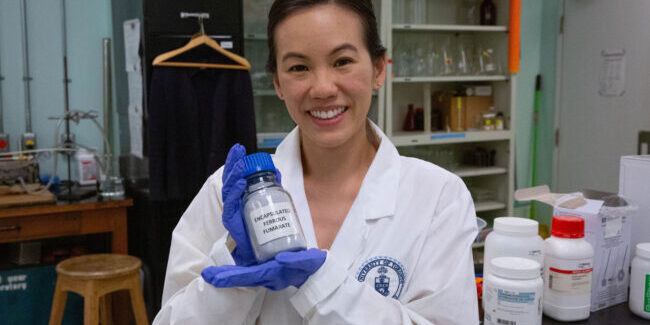The prep time for Gamma Knife radiosurgery — performed mainly for brain tumours and cerebrovascular disorders — has been reduced from hours to around one minute without loss of accuracy, thanks to a quantum-inspired technology called the Digital Annealer (DA).
The DA technology was developed through a collaboration between U of T researchers and Fujitsu Laboratories Ltd. and applied to the Gamma Knife treatment plan by a team led by U of T Professors Ali Sheikholeslami (ECE) and Mojgan Hodaie (Department of Surgery).
“We were able to translate the treatment planning into a combinatorial optimization problem,” says Sheikholeslami. “By changing the types of variables under certain constraints, by breaking it down into smaller pieces, it could be handled by the DA solver. Before delivery of the dose, the DA treatment plan can be imported into clinical software for verification.”
He says that the plans developed by the DA method have proven to be as accurate as those found by conventional methods.
Gamma Knife radiosurgery, which requires no incision and can be performed without general anesthetic, delivers beams or ‘blades’ of radiation doses aggregated from 192 gamma sources, aimed at different targets in the patient’s brain. As a ‘stereotactic’ surgical procedure, it uses medical imaging to locate these positions in advance, maximizing the area for dosing and minimizing damage to surrounding healthy tissue.
Determining the size and shape of the target areas is a labour-intensive procedure. Doctors and radiologists must progress through the vast number of possible plans by manually inputting parameters and recording the results, using past experience as a guide.
This process can take up to several hours, which lengthens the patient’s time in clinical care and also affects the number of patients that can be treated in any one day.
Shrinking the duration of this procedure to around a minute not only reduces the patient’s inconvenience, but also the labour and time cost of the medical personnel required to assist the doctor.
The DA is able to accomplish this because its architecture emulates quantum behaviour on conventional hardware, following a similar process of progressive approximation to arrive at a final result, which enables it to quickly make real-time optimization calculations — much more quickly than conventional software.
“The Gamma Knife treatment plan is a great example of the DA’s difference-making ability in health care,” says Sheikholeslami. “We envision the DA technology to have a wealth of future applications. As of now, use cases are being pursued in finance, materials discovery, operations research and neural network training.”
Tackling the problems of today is exactly why the Digital Annealer was developed, says Masaya Kibune, the Director of Fujitsu Consulting (Canada) Inc.
“At present, true quantum computing is still in its infancy,” he says. “There are stability issues, for example, and quantum computers require extreme cold to operate, near zero Kelvin, which demands infrastructure with massive energy costs. The DA takes advantage of similar principles of connectivity and simultaneity at room temperature, and a unit can be easily miniaturized to fit in data centres.”
Such were the innovations envisioned in 2018 when Fujitsu Laboratories Ltd. launched its collaboration with U of T Engineering, which led to the establishment of the Fujitsu Co-Creation Research Laboratory at U of T’s Myhal Centre for Engineering Innovation & Entrepreneurship.
Last November, the partnership with Fujitsu was formally extended for three years.
“The Fujitsu Co-creation Research Lab is a hive of activity for principal investigators, graduate students, postdoctoral fellows and associates,” says ECE Chair Professor Deepa Kundur. “The U of T–Fujitsu collaboration has produced dozens of publications on research topics from memory design to high-speed signaling to optimization. It continues to be a shining example of the benefits of collaboration.”
Sheikholeslami’s connection with Fujitsu goes back to the beginning of his career, when he interned for six weeks at its head office in Kawasaki, Japan.
“For me, it’s been a fruitful relationship for over twenty years now,” he says. “And there’s plenty more to come.”




